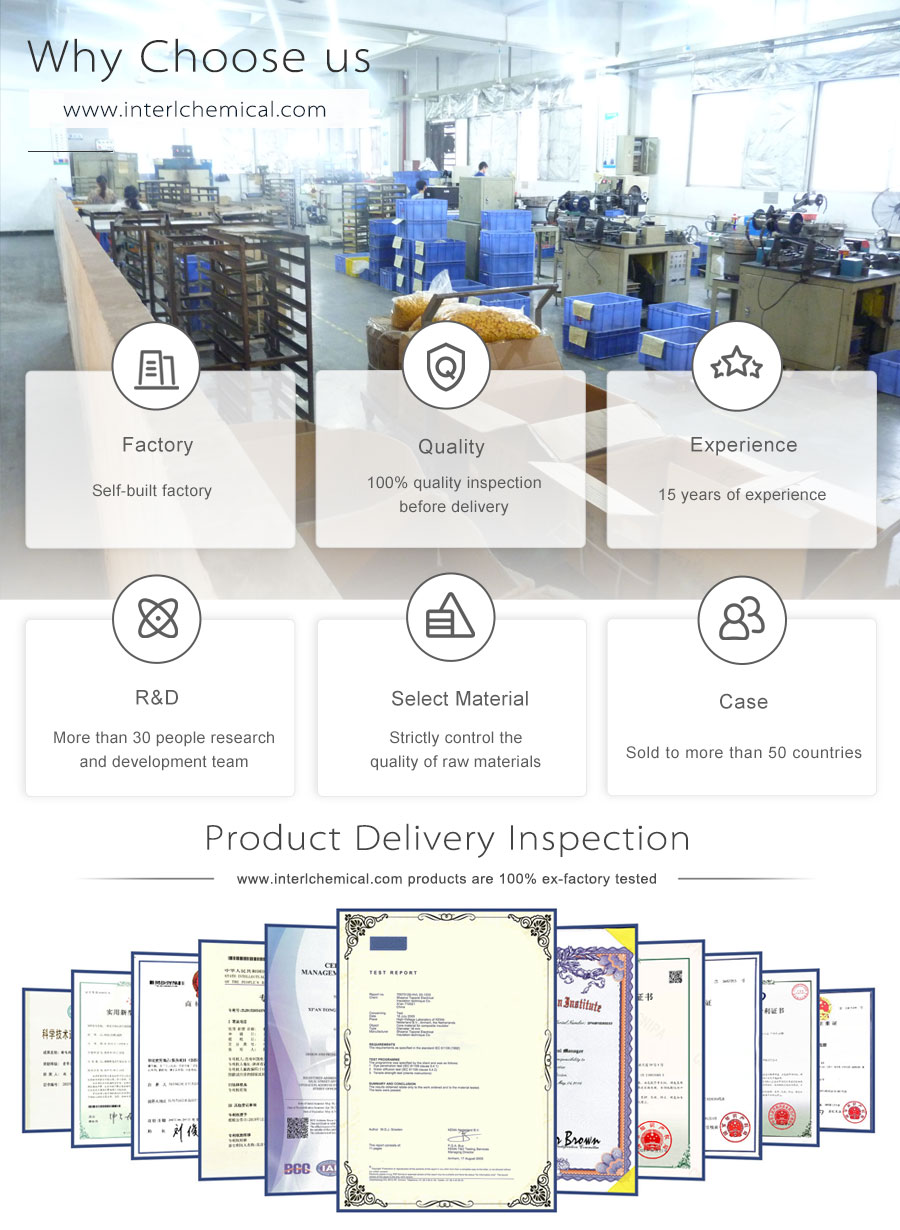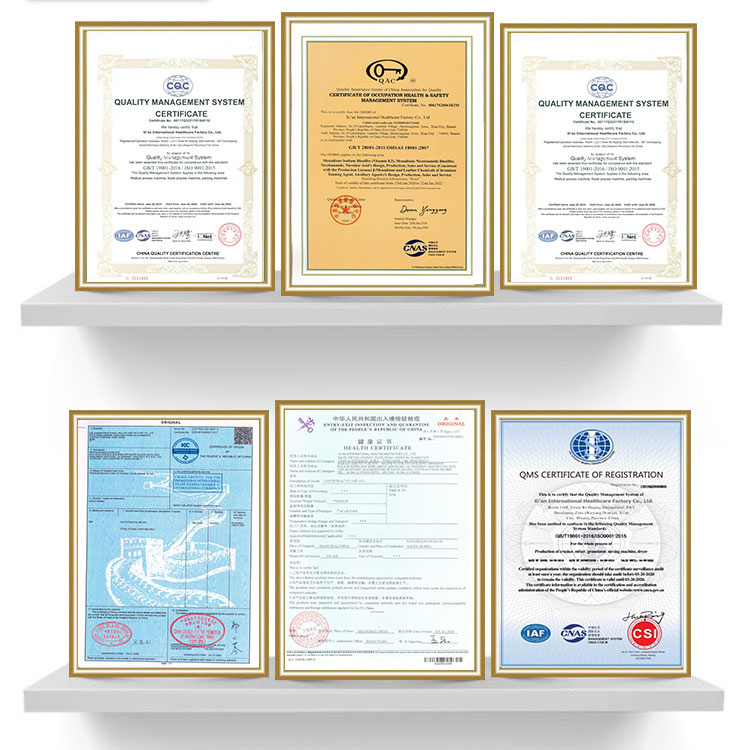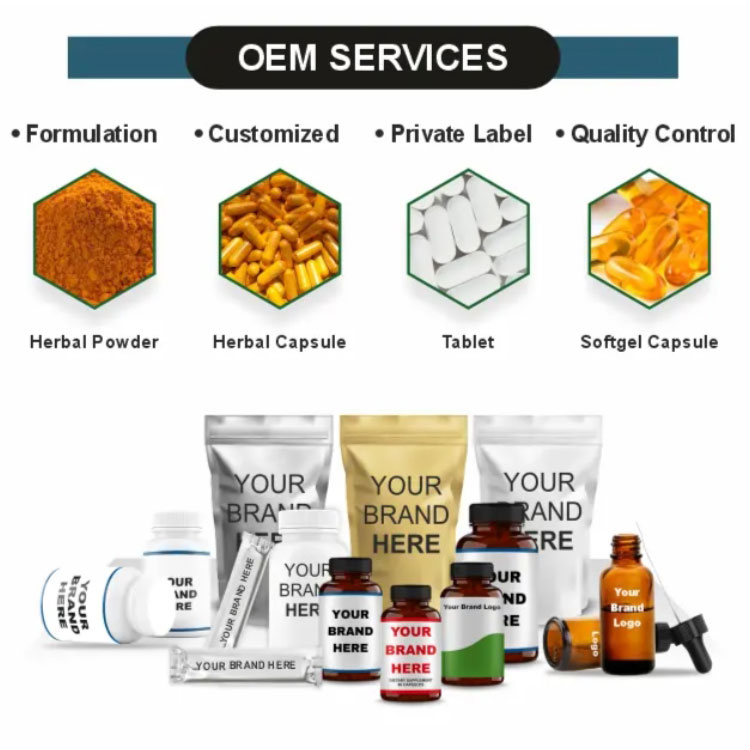Phone: 86-29-89601602
Mail: sales27@interlgroup.com
Add: Room 305 , 3/F , Haipai Decoration Office Building , Yudu Avenue , Yuncheng , Shanxi
Roxithromycin powder Raw Materials CAS 80214-83-1
Product Overview:
Roxithromycin powder English alias :Claramid, Rulid, Western medicine, is a new generation of macrolide antibiotics, Roxithromycin mainly acts on gram-positive bacteria, anaerobic bacteria, chlamydia and mycoplasma. Its antibacterial effect in vitro is similar to erythromycin, and its antibacterial effect in vivo is 1-4 times stronger than erythromycin. Roxithromycin is the most commonly used broad-spectrum anti-inflammatory drug and a member of the broad-spectrum antibiotic family. Common names are roxithromycin capsules, roxithromycin enteric-coated tablets, roxithromycin disperse tablets, roxithromycin dry suspension, etc. Roxithromycin powder is commonly used for pharyngitis and tonsillitis caused by Streptococcus pyogenes, and various inflammations caused by sensitive bacteria.
Roxithromycin powder Raw Materials CAS 80214-83-1 Attributes
Product name:Roxithromycin powder
CAS:80214-83-1
MF:C41H76N2O15
MW:837.05
EINECS:617-007-5
Specification:99% min Roxithromycin powder
Sample:Roxithromycin powder Avaliable
Appearance:white powder
Storage: Cool Dry Place
Brand:Global ASAP Nutrition Factory
Shelf Life: 2 Years
Test Method: HPLC
Roxithromycin powder Raw Materials CAS 80214-83-1 Details
>Click here to get more information
Uses and synthesis of Roxithromycin powder
Roxithromycin powder English alias :Claramid, Rulid, Western medicine, is a new generation of macrolide antibiotics, Roxithromycin mainly acts on gram-positive bacteria, anaerobic bacteria, chlamydia and mycoplasma. Its antibacterial effect in vitro is similar to erythromycin, and its antibacterial effect in vivo is 1-4 times stronger than erythromycin. Roxithromycin is the most commonly used broad-spectrum anti-inflammatory drug and a member of the broad-spectrum antibiotic family. Common names are roxithromycin capsules, roxithromycin enteric-coated tablets, roxithromycin disperse tablets, roxithromycin dry suspension, etc. Roxithromycin powder is commonly used for pharyngitis and tonsillitis caused by Streptococcus pyogenes, and various inflammations caused by sensitive bacteria.
Mechanism of action of Roxithromycin powder
1. Binding to bacterial ribosomes: Roxithromycin reversibly binds to the 50S subunit of bacterial ribosomes.2. Blocking the transpeptidation process: After binding, it interferes with the displacement of aminoacyl-tRNA at the P position, thereby inhibiting the extension of the peptide chain and blocking the synthesis of bacterial proteins.
3. Inhibition of bacterial growth: Protein synthesis is blocked, and bacterial growth and reproduction are inhibited, thereby achieving an antibacterial effect.
4. Concentration dependence: The antibacterial activity of roxithromycin is generally considered to be concentration-dependent, that is, the higher the drug concentration, the better the antibacterial effect.
5. Mainly antibacterial effect: Roxithromycin is usually an antibacterial agent, that is, it mainly inhibits bacterial growth rather than directly killing bacteria. However, at high concentrations, it may also show a bactericidal effect on some bacteria.

Indications of Roxithromycin powder
1. Respiratory tract infection:
Upper respiratory tract infection: such as acute pharyngitis, tonsillitis, sinusitis, otitis media, etc.
Lower respiratory tract infection: such as acute bronchitis, pneumonia, acute exacerbation of chronic bronchitis, etc.
Atypical pneumonia: such as Mycoplasma pneumonia, Chlamydia pneumonia, Legionella pneumonia, etc.
2. Skin and soft tissue infection:
Furuncle, carbuncle, cellulitis, erysipelas, folliculitis, acne, etc.
Secondary infection after trauma and burns.
3. Urogenital tract infection:
Non-gonococcal urethritis, cervicitis, pelvic inflammatory disease, etc.
Gonococcal urethritis (often used in combination with other drugs)
4. Oral infection:
Periodontitis, gingivitis, secondary infection of oral ulcers, etc.
Specific infections such as Legionnaires' disease, whooping cough, diphtheria, Chlamydia trachomatis infection, and Mycobacterium avium infection.
Production methodprocess of Roxithromycin powder
Using erythromycin as raw material, it reacts with hydroxylamine hydrochloride in triethylamine and methanol to form oxime, and then reacts with methoxyethoxy methyl chloride in acetone to obtain Roxithromycin powder.











